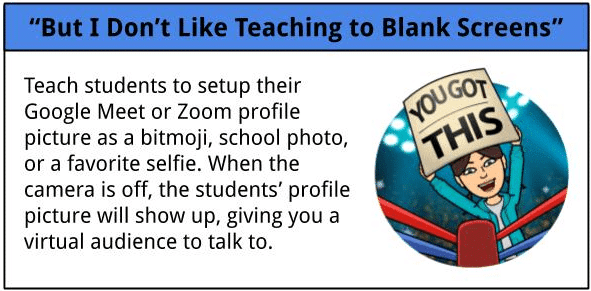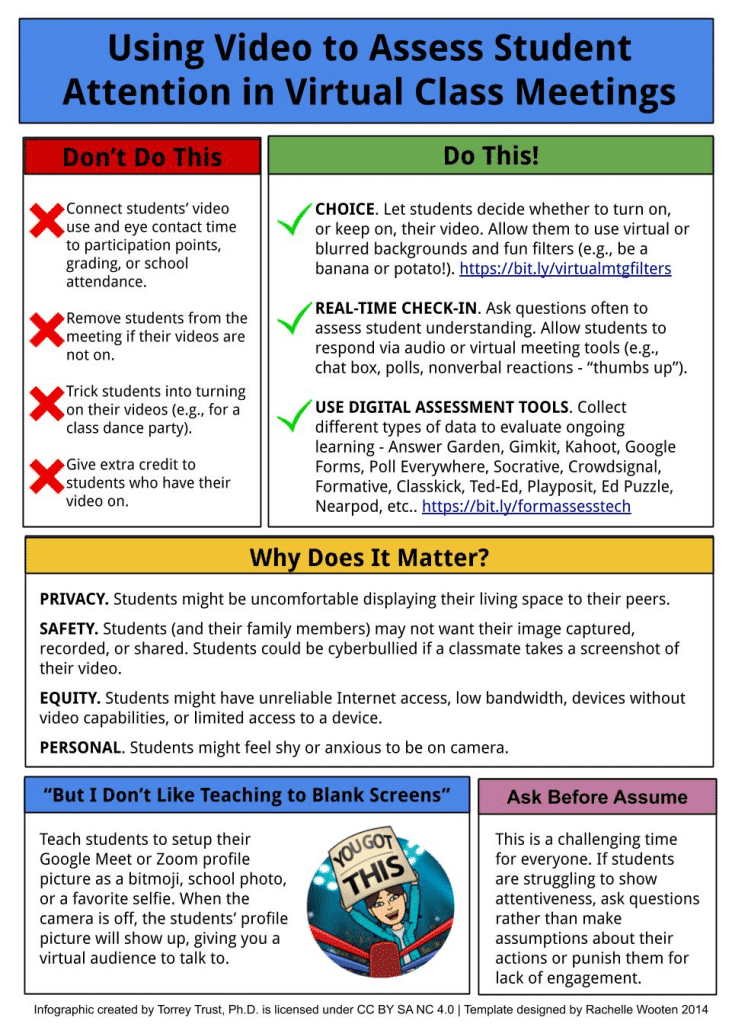About Video Conferencing

Maha Bali

Autumm Caines


The image above is from an infographic created by Torrey Trust under CC-BY-SA-NC 4.0.
A note about cameras on/off
You will notice in some of the activities, we offer alternative ways of conducting activities if students have their cameras off.
Many people teaching online during COVID-19 feel compelled to require students to turn their cameras on. This is problematic for several reasons, including connectivity and cultural issues and that it is contrary to trauma-informed pedagogy and having a camera on is not really a proxy for engagement – here are some other ways to engage students that do not require cameras on. Giving students choice here is key, while also making sure your attention is not unevenly distributed among students with cameras on and off. Teachers can try this interactive tool developed by Autumm Caines (inspired by Torrey Trust’s infographic below) to help them take note of equity in their video conferencing practices.
A note about different video conferencing tools
Institutions differ in which video conferencing tools they offer and which they may restrict.
Most video conferencing tools have similar functionality, but the area that seems most different between tools is the smoothness of the break-out rooms functionality. If you are unable to use Zoom with your classes, here are some alternatives that offer breakout room functionality:
- MIT’s free and open source tool Unhangout (based on Jitsi). Once you and your students have an account, it is pretty straightforward to use. The only limitations are:
- Max 10 people per breakout room. This is good practice, though!
- There is no main room for synchronous conversation, only text chat; but you can do the full-group main room on any other tool you have access to.
- BigBlueButton – open source tool. If you cannot self-host, ask your institution. If you use Canvas it may already be integrated.
- Blackboard Collaborate breakout groups, (article, opens in a new tab)
- How to use Microsoft Teams Breakout Rooms (video, opens in a new tab).
Can we build community asynchronously?
There are many reasons why you might need to consider doing community-building activities asynchronously – whether it is because some of your students have sub-optimal infrastructure, or your institution requires it. For most activities that are demonstrated synchronously, we have offered adaptations for doing them asynchronously or engaging students with them asynchronously if needed.

The infographic above is created by Torrey Trust under CC-BY-SA-NC 4.0.

